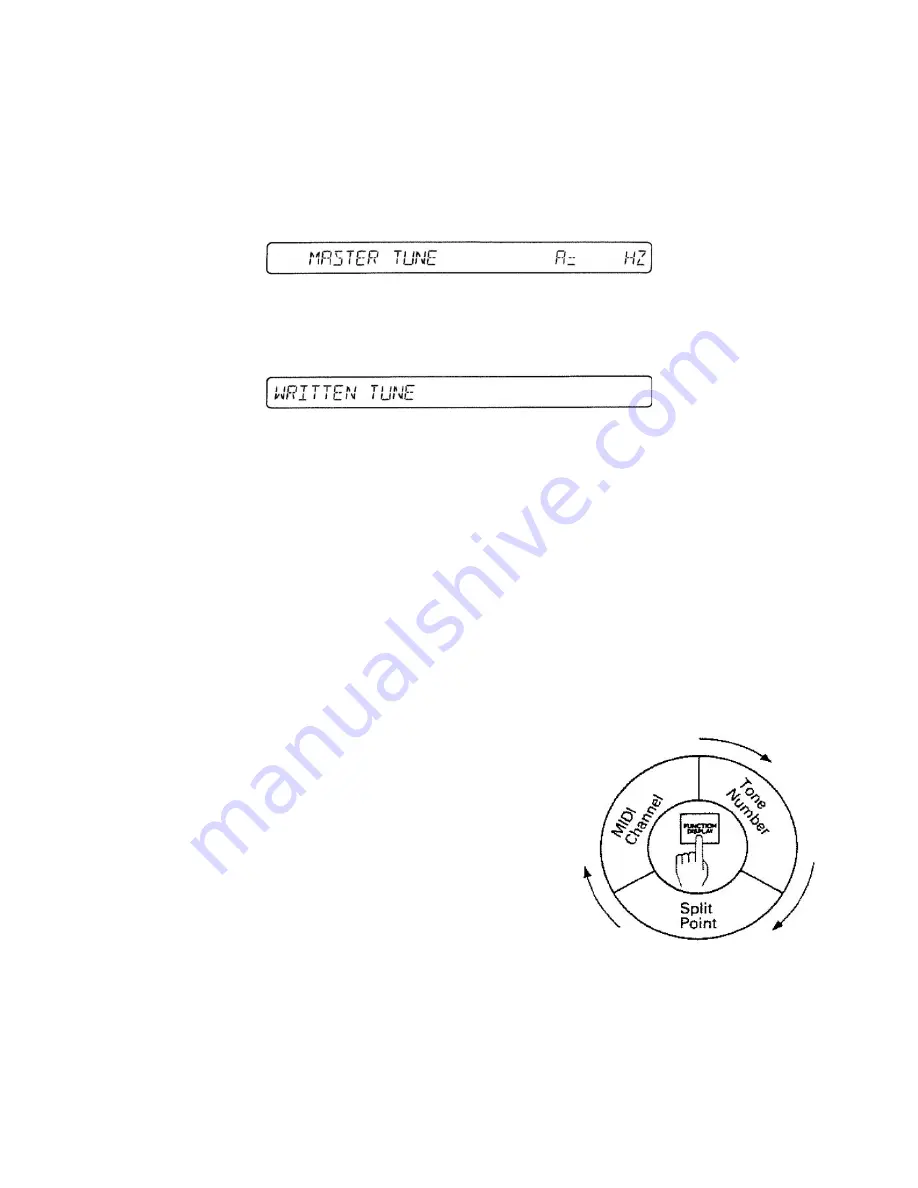
Manual Version 3.21
Page. 38 of 73
SECTION 6 - OTHER USEFUL FUNCTIONS
6.1 Tuning
You can tune the JX-10 using the
α
Dial as follows:
1. With the Display showing the Patch Memory, press the Master Tune button
2. As you play the keyboard, tune the JX-10 by rotating the
α
Dial.
As you rotate the
α
Dial clockwise, this will raise the pitch. Rotating it counterclockwise will lower the pitch.
The Display will show the set pitch. A440 is the default.
The pitch shown in the Display changes in 1Hz steps, but the actual pitch changes continuously.
3. Set the Protect switch on the JX-10 to the OFF position, and press the Write Button.
4. The Display will respond as below, showing that the tuning WRITE is completed.
5. Return the Protect Switch on the JX-10 to the ON position.
6.2 Display Functions
Even when playing, you can change what is currently shown in the Display to an alternative indication.
Four different “Function Displays” are available as follows:
•
Patch Memory Selected:
This is the normal display shown by default.
•
MIDI Channel:
The MIDI Channel number cur
r
ently in use is displayed.
•
Tone Name:
The names of the Tones currently in use are displayed.
•
Split Point:
In Split Mode, the split points of the Lower and Upper sections are displayed.
Or, shows Key Mode “DUAL”.
If you wish to view any of the displays outlined above, simply press the
FUNCTION DISPLAY button. The Display changes from the usual
indication to Normal mode, MIDI Channel, Tone Name, or Split Point as
shown below.
Whilst the Tone number is being displayed, selecting a different Tone will
display the new Tone number.
When you call a different Patch Memory, the Function Display will
change accordingly.
To return to the usual Display, press the ENTER key (or cycle through
each option 1,2,3,4 using the FUNCTION DISPLAY button).
Display option examples are shown on the next page.
(Note that the order of these depends on which version firmware you
have currently installed).






























